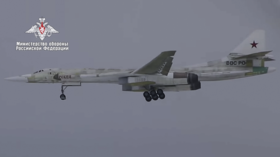‘Hopefully it won’t hit anybody’: Pentagon chief says ‘no plan to shoot down’ unguided Chinese rocket as it falls from orbit
While the US military is capable of “a lot of things,” they are not planning to shoot down debris from a Chinese rocket, which is hurtling back to Earth in an uncontrolled reentry, Pentagon head Lloyd Austin has said.
Asked on Thursday about the unguided Long March 5B rocket parts careening toward the planet at around 15,000 miles per hour, the defense secretary said the latest estimates suggest it will crash-land sometime on Friday or Saturday, but noted there would be no attempt to blast it out of the sky.
“At this point, we don’t have a plan to shoot the rocket down. We’re hopeful it’ll land in a place where it won’t harm anyone – hopefully in the ocean or someplace like that,” Austin said, also taking a thinly veiled jab at Beijing over the incident.
I think this speaks to the fact that, for those of us who operate in the space domain, there should be a requirement to operate in a safe and thoughtful mode, and make sure that we take those kinds of things into consideration as we plan and conduct operations.
U.S. Defense Secretary Lloyd Austin said there was no plan at this point to shoot down remnants of a large Chinese rocket expected to plunge back through the atmosphere this weekend https://t.co/dEf7SLOwt9pic.twitter.com/QTAke7yvOj
— Reuters (@Reuters) May 6, 2021
In a follow-up question from a reporter, Austin was pressed on whether the military actually has the ability to shoot down the rocket should that become necessary, to which he said “we have the capability to do a lot of things,” but reiterated that no shoot-down is in the cards.
The Pentagon initially said it was tracking the rocket stage earlier this week, with the 18th Space Control Squadron of the US Space Force releasing updates on its flight path on a special website. The exact trajectory of the 22-ton craft won’t be known until just a few hours before it crashes down, however.
Amid that uncertainty, Russia’s space agency Roscosmos released a map showing possible places of impact earlier on Thursday, which covered a large part of the US – including Los Angeles, New York and Washington, DC – as well as Latin America, Africa, Australia and South Asia. Some components of the rocket booster are expected to disintegrate in the atmosphere, but “individual non-combustible structural elements can reach the Earth’s surface,” the agency added.
Though there is a small chance the rocket could touch down on land, some experts, such as Harvard University astrophysicist Jonathan McDowell, argue it is extremely unlikely any debris would hit a person, calling the risk “incredibly tiny.”
Also on rt.com Watch out, New York? Russian space agency posts map of where Chinese rocket booster might crashThe Chinese rocket was sent into orbit late last month, embarking on an 18-month project to construct Beijing’s first-ever space station. The successful April 30 launch put the station’s first module – the Tianhe (Harmony of the Heavens) – into low Earth orbit, set to be joined by two smaller modules in the coming months. While the rocket stage detached from the Tianhe module as intended, it was unable to maneuver into a safe deorbiting path for a controlled reentry.
Think your friends would be interested? Share this story!














